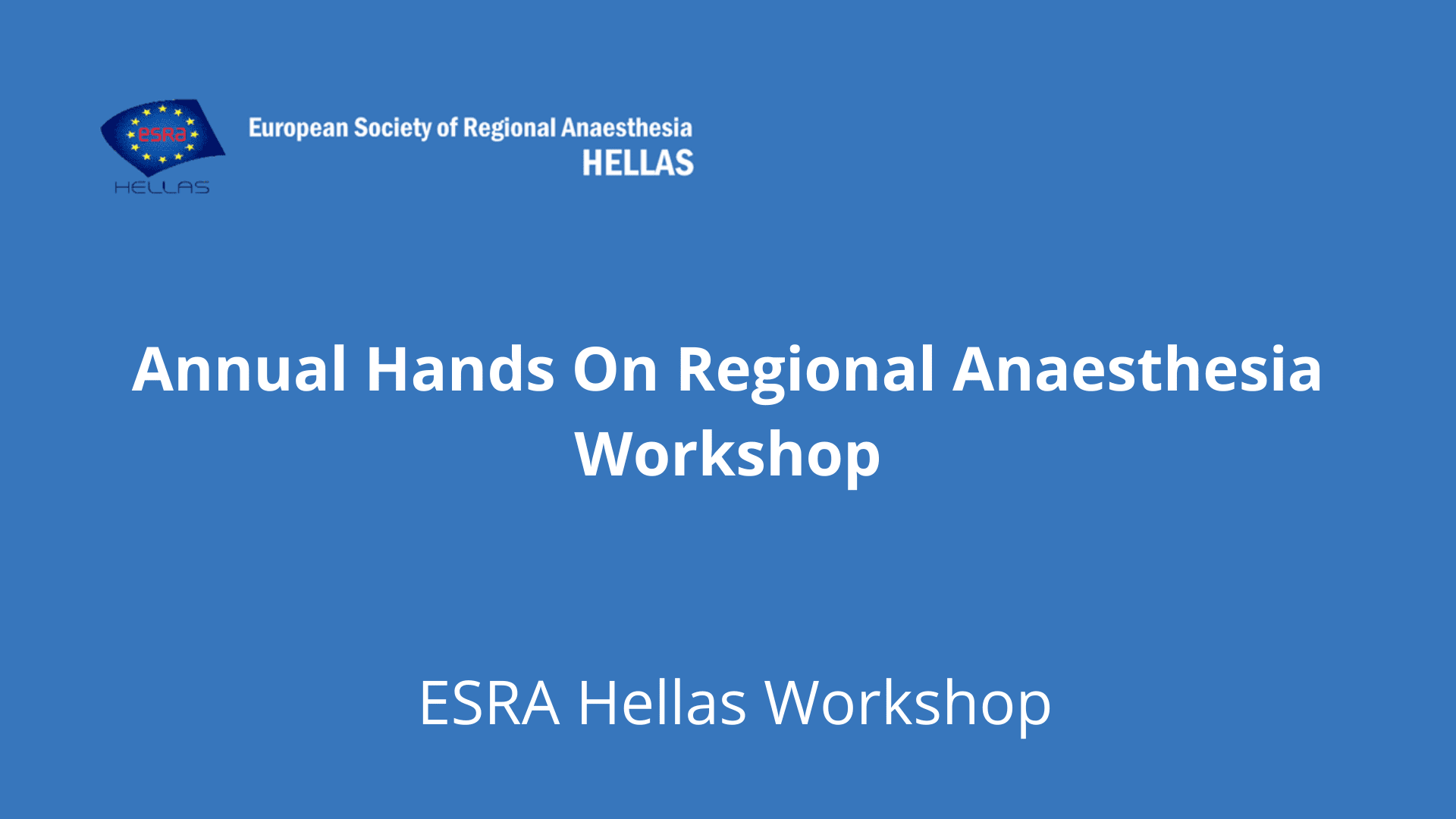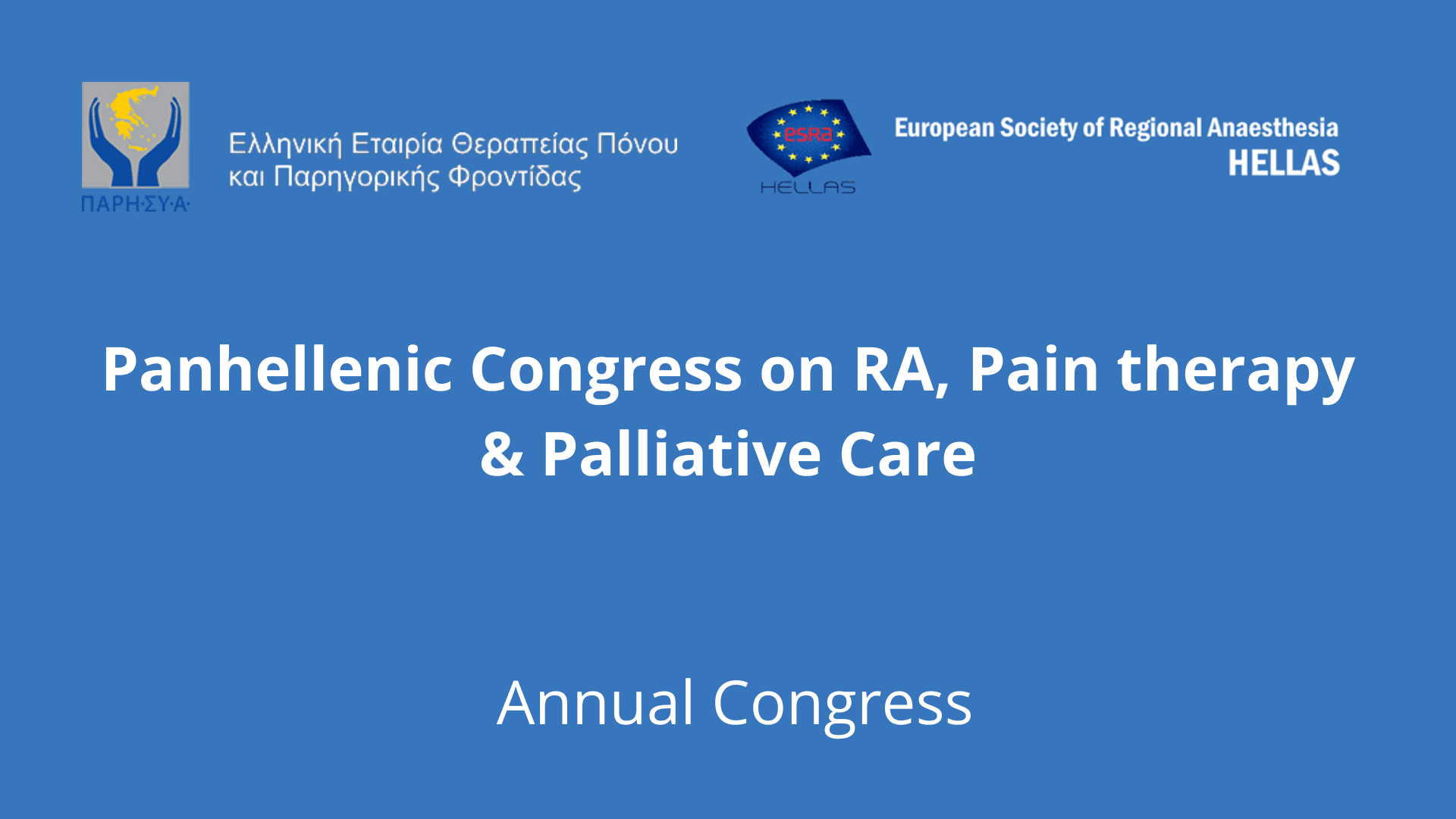NEUROLOGIC DEFICIT AFTER CENTRAL NEURAXIAL BLOCK: WHAT TO DO?

ESRA Highlights
23rd Annual ESRA Congress
September 8 – 11, 2004, Athens, Greece
Congress Highlights
NEUROLOGIC DEFICIT AFTER CENTRAL NEURAXIAL BLOCK
Andre Van Zundert
Catharina Hospital – Brabant Medical School
Eindhoven – The Netherlands
For Full Text in pdf form click here.
More knowledge, new drugs, new material, new techniques and newer approaches have led to more applications of established techniques, applied to more patients, both in adults and children. Regional anaesthesia too is widely applied and accepted with many advantages for our patients undergoing operative interventions. Although there are nowadays many peripheral anaesthetic blocks, in this manuscript only central neuraxial blocks are discussed.
Despite its excellent reputation, regional anaesthesia has its own complications, including transient radicular irritation, cauda equina syndrome, epidural abscess or hematoma formation, with possibly devastating results ending with a paraplegic or a dead patient. Toxic reactions and high or total spinal blocks are possible, although extremely rare. Side effects of neuraxial anaesthesia, such as an extended sensory and/or sympathetic block, resulting in hypotension and difficulties with respirations or an intense long-lasting motor blockade, resulting in urinary retention and preventing an early ambulation, can be annoying for the patient but, if adequately treated, should lead to a full recovery. Pruritus, nausea and vomiting, and herpes simplex infections can be seen depending on the use of adjuvants to the local anaesthetic solutions.
Accidental injections of large doses of local anaesthetics intravenously, resulting in toxic reactions, or accidental intrathecal injections, resulting in total spinal block, are seen less and less as we are using nowadays more spinal anaesthesia than epidural anaesthesia. Careful injection of titrated small amounts of local anaesthetics, under continuous monitoring of the patient should avoid ending in such a catastrophe. Αn anaesthesiologist should know at all times in which space he is injecting what kind of local anaesthetic solution (check it yourself!) and he should be prepared for to take care all the consequences of this act including how to solve complications, including resuscitation. If correctly resuscitated, there should be no reason to have not a perfect outcome for the patient after toxic reactions or total spinal blocks.
Perhaps the most feared complication associated with regional anaesthesia is permanent neurologic impairment. The issue of potential neurotoxicity has been the focus of recent discussions and controversies triggered by experimental data and a number of case reports of severe and persistent neurological deficits. Postdural puncture headache after unintentional dural puncture, with a large-bored epidural needle, can create postural headaches, for which a blood patch might be necessary. With the increased use of fine spinal needles for spinal anaesthesia, the use of the combined spinal-epidural technique and a better epidural technique, PDPH should be limited to a minimum. Low back pain following surgery, with οr without regional anaesthesia, is an often-heard problem although its association with anaesthesia is most doubtful. Following vaginal delivery, low back pain has been reported in as many as 50% of the parturients, although the epidural block is not associated with an increased incidence of backache. Pain localized over the lumbar spine may be caused by stretching and flattening of the lumbar lordotic curve. Bladder dysfunction occurs in about 15% of cases in the immediate postpartum period, but it is caused by the delivery itself, and is not related to the regional block. Α foot drop can result from pressure of the lateral popliteal nerve between the head of the fibula and an improperly positioned stirrup.
Inadvertent injections of caustic drugs should be avoided at all times. For this reason, always assure yourself of the local anaesthetic solution injected, the dose, the volume and the concentration used.
Since the early 1990’s, awareness of the potential of local anaesthetic induced neurotoxicity has focused our attention towards a new phenomenon, the post spinal transient radicular irritation. In the last ten years many studies were performed focusing on the TNS syndrome. This syndrome has been reported with increasing frequency in connection with many of the currently used local anaesthetics. The TNS syndrome has been described in patients who had an uncomplicated spinal anaesthetic and have made a complete recovery. Α clear interval, normally 2 to 5 hours after mobilization, without any signs or symptoms of neurological deficits, exists before the pain starts. Α dull or throbbing back pain and/or dysaesthesia in the buttocks, thighs, or lower limb develop within 24 h after full recovery from the spinal block. Patients who are operated in the lithotomy position, using lidocaine spinal anaesthesia, and who are mobilized early in the postoperative phase, seem to be prone to develop TNS. The syndrome is not associated with any objective sensory, motor or sphincter disturbances. The pain related to TNS is rated in some cases as severe (VAS P – Score > 8), lasts only a few days, and responds well to treatment with non-steroidal anti-inflammatory drugs (NSAIDs), the problem resolving fully within one week.
Analysis of potential factors that might increase the risk of TNS with local anaesthetics failed to demonstrate a causal relationship between TNS and gender, age, race, ASA class, height, history of back pain, needle type or size, positioning during injection, approach and interspace for injection and the addition of opioids or glucose. No effect of local anaesthetic dose, concentration, and osmolarity could be demonstrated. Factors that have a causal relationship with TNS, are the local anaesthetic used, the addition of phenylephrine to the local anaesthetic solution, the lithotomy position, manipulation during surgery and early mobilization (out-patients).
What is the etiology? Ιs TNS a syndrome situated at the lower end of the neurotoxicity spectrum, with the cauda equina syndrome at the other end? Although there is a lot of speculation, we have to conclude we just don’t know at this moment what is the reason for developing TNS. TNS has been documented after the use of spinal anaesthesia with all local anaesthetics, after all kinds of surgery with the patients in all kind of positions, whether they are mobilized early or not. Patients receiving lidocaine and mepivacaine via the subarachnoid space have a substantial risk in developing TNS, whereas bupivacaine, prilocaine and tetracaine pose less risk of injury and are associated with a dramatically lower – but not zero – incidence of TNS. We therefore have to follow-up our patients in the postoperative period to determine the incidence of TNS. Perhaps it would be wise not only to see our patients in the pre-operative phase but also postoperatively. Only then an exact view can be given about the outcome after regional blocks.
The cauda equina syndrome (bladder and and sphincter dysfunction with sensory Ιοss in the perineal area and motor weakness in the legs) has been related to the accumulation of large volumes of hyperbaric spinal anaesthetics in the area of the cauda equina nerves.
Epidural hematomas are extremely rare and develop mostly in anticoagulated patients, or in patients who have vertebral hemangiomas. Most epidural abscesses develop spontaneously, due to a hematologous spread, without any involvement of an anaesthesiologist. But epidural abscesses may be seen days or even weeks after an epidural catheter has been inserted into the epidural space. Sometimes the relationship has long been forgotten. Severe back pain, fever, leucocytosis, nuchal rigidity is usually present, but not always, and sometimes these symptoms are misleading. One should always be suspicious about these rare but potential disastrous complications leading to permanent neurologic impairment, complicating regional anaesthesia techniques. Ιn case of any doubt one should not delay more radiological diagnostics. MRI (with gadolinium) is the cornerstone to detect an epidural abscess. No other tool will give us more indications of the presence of an epidural abscess. An eight-hour therapeutic window usually will be present, once the epidural abscess gives objective signs of spinal cord trauma. It is within this time frame that therapeutic options (surgical evacuation by laminectomy of the epidural abscess) will result in the best outcome. If no therapy is given within this time frame, epidural abscesses frequently will lead to permanent paralysis of the patient. Therefore monitor patients in the postoperative period. As most of the time our non-anaesthesia colleagues will be confronted first with this problem, it is essential that these doctors are aware of the signs and symptoms, the diagnosis and treatment of epidural abscesses.
Each neurologic deficit in the postpartum or post-operative period should be carefully evaluated and re-evaluated and a neurologic follow-up is essential. It is essential that the anaesthesiologist involved is alerted and that he himself can see the patient, so that he can inform the patient about what has happened, what are the options, what is the prognosis, how to solve the problem, … reassure the patient or take the appropriate steps. Each complication and perhaps also side effects should be documented. Οnly then, we will find out what is the real incidence of these mishaps.
It is strongly advised to get a neurologist early in the process where a neurological complication is encountered. The neurologist too should document his findings as accurately as possible. Far too often, when this basic information is lacking, it is impossible to make a reconstruction of what has happened. Both the anaesthesiologist and neurologist should be aggressive in the early detection of possible reversible problems, which if not diagnosed early, can result in permanent damage. Once a complication is seen, it is very important that the anaesthesiologist sees the patient himself on a regular basis. Be open to the patient and tell him frankly what you think. Οnly then patients will recognize that you try to do your best. On the other hand, if you do not show up, patients will think you are not interested. That often is the reason why patients will call for legal help and can be the basis for a legal suit. Α judge often will be impressed if you show your goodwill and look after the patient, but will feel no empathy when you never showed any interest in your patient. Therefore Ι would strongly advise to make regular follow-ups with your patients till the problem has been solved and that you can be reached if necessary.
Have protocols on “what to do in case of complications” ready in your hospital. Know what you have to do in case something goes astray. Have protocols available for patients on anticoagulation, which should be updated regularly. Protocols on how ward nurses should handle complications with clear written instructions of what has to be done and who has to be contacted, are essential on each ward.
Constant vigilance and alertness is of paramount importance in anaesthesia and perhaps even more so in regional anaesthesia. The patient himself usually will give you the best information about the outcome of a regional block, but you only will know it if you meet the patient. Therefore Ι think we need to look after the patient in the postoperative phase. Our job is not done when the patient leaves the recovery room. We need to know what the complications beyond the operation room are. Both on the ward and by telephone call of patients who were operated upon on an ambulatory basis. That will cost energy, but the pay-off will be better patient care and more satisfaction for all.






